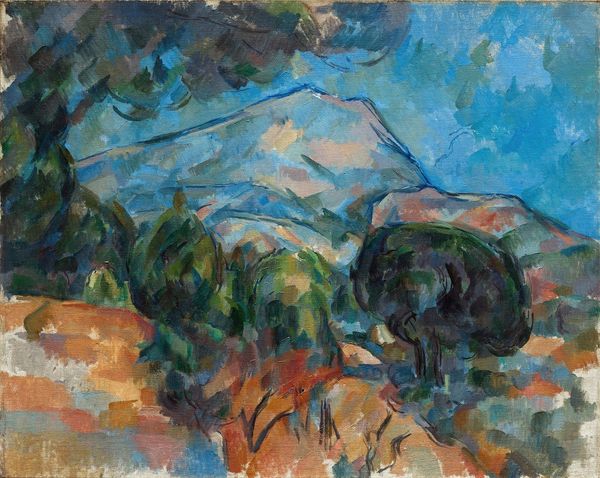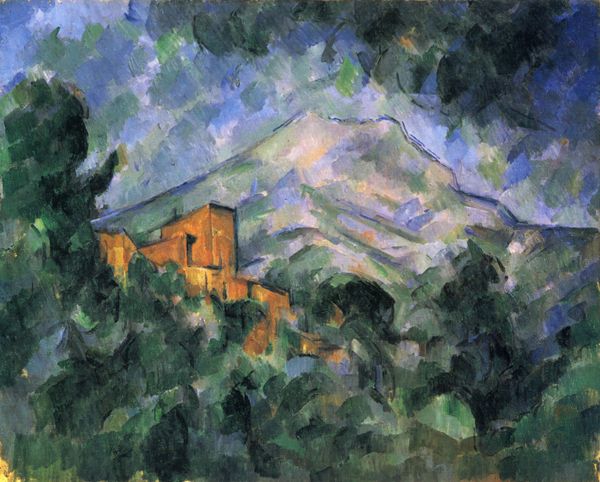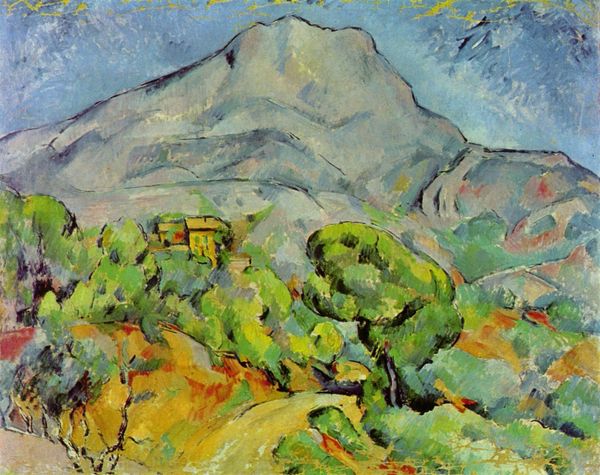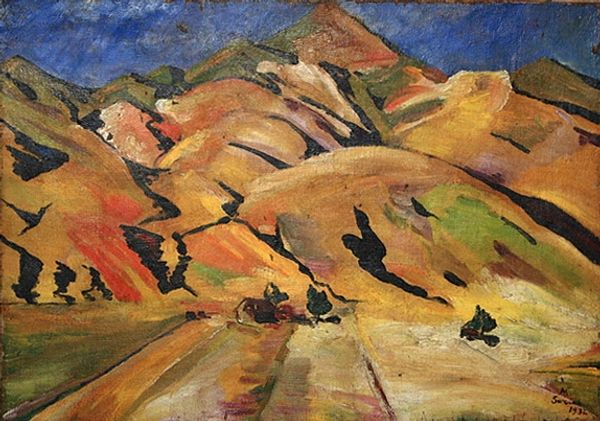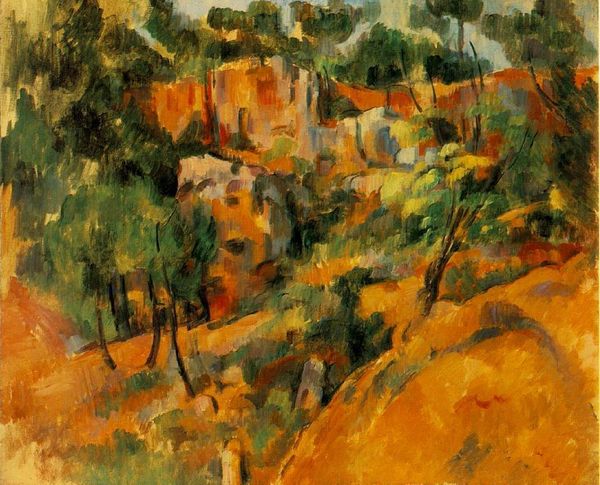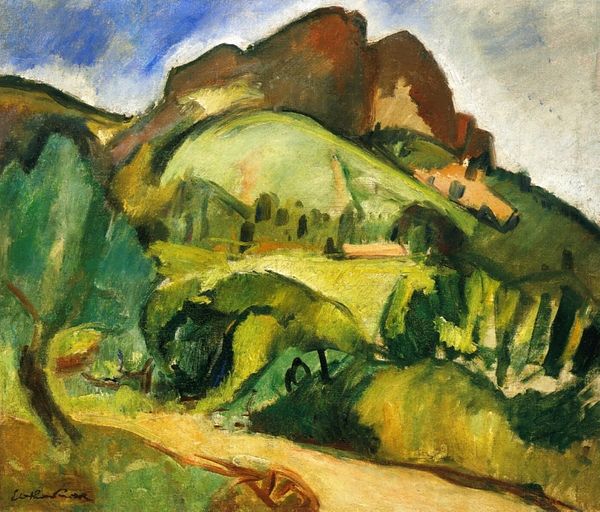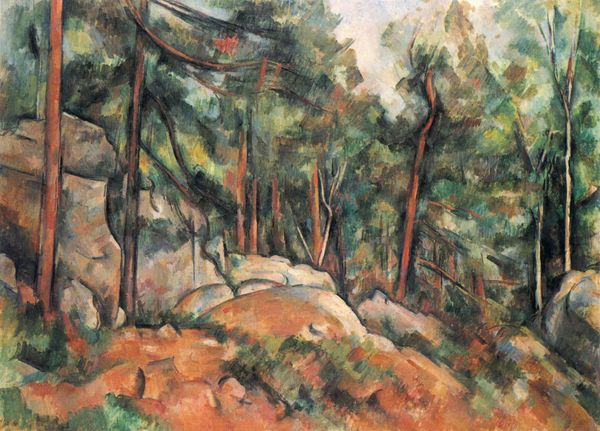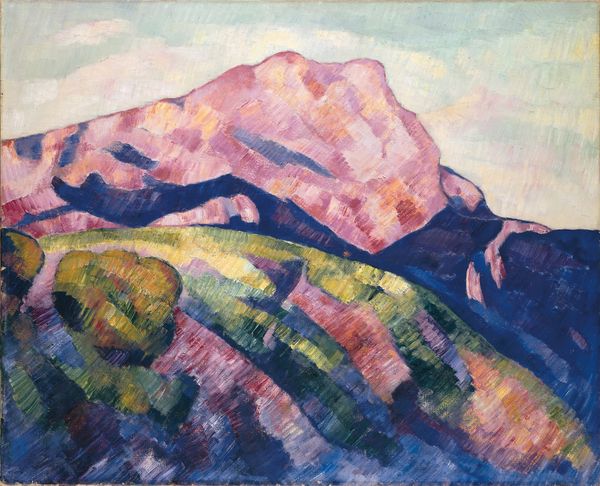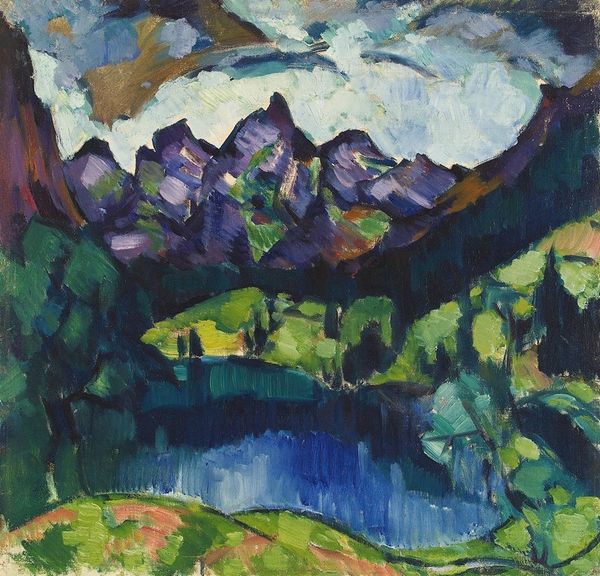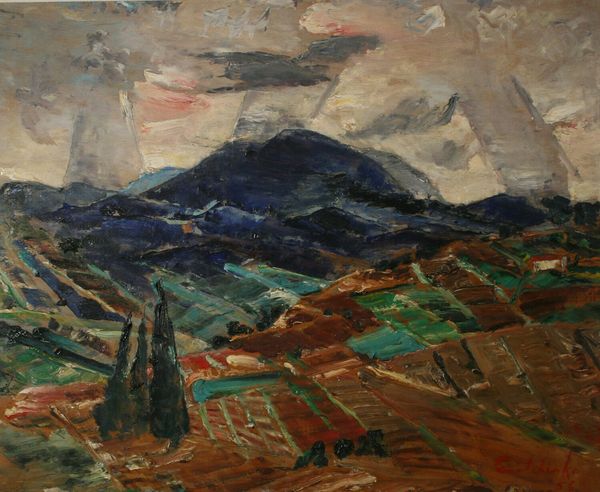
painting, plein-air, oil-paint, impasto
#
sky
#
painting
#
plein-air
#
oil-paint
#
landscape
#
impressionist landscape
#
oil painting
#
impasto
#
geometric
#
post-impressionism
Dimensions: 65 x 81 cm
Copyright: Public domain
Editor: So here we have Cézanne's "Mont Sainte-Victoire," painted in 1897 using oil on canvas. The way he's broken down the landscape into geometric shapes is fascinating, and his color palette is muted. How do you interpret this work? Curator: Notice how Cézanne continually returned to Sainte-Victoire? Mountains, across cultures, symbolize stability, endurance, a connection between the earthly and spiritual realms. I'm interested in the *act* of revisiting this particular subject. What do you suppose drew him back repeatedly to this mountain? Editor: Perhaps its solidity offered him a constant in a changing world, or that he never quite felt he captured its essence. Curator: Precisely. It's a dialogue, not just with nature but with his own memory and evolving perception. And consider the vantage point, seemingly both intimate and distant, recalling traditions in how sacred places were represented. Are there elements that resonate for you personally? Editor: I think the repetition gives it a sense of time collapsing, as if the painting holds multiple moments within one frame. Curator: An astute observation! Cézanne uses the mountain as a vessel containing fragments, as if assembling not just a landscape, but memory itself. Editor: I hadn’t considered it that way before, seeing the painting as a meditation on time and perception, that gives me a completely new perspective. Curator: It enriches the landscape genre, prompting contemplation about permanence and the ever-shifting nature of seeing and remembering.
Comments
No comments
Be the first to comment and join the conversation on the ultimate creative platform.

